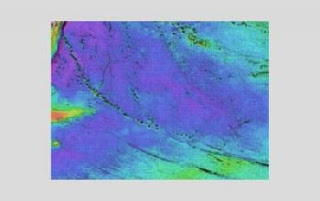
Geoscientists have just completed an expedition to a string of underwater volcanoes, or seamounts, in the Pacific Ocean known as the Louisville Seamount Trail.
There they collected samples of sediments, basalt lava flows and other volcanic eruption materials to piece together the history of this ancient trail of volcanoes.
“Finding out whether hotspots in Earth’s mantle are stationary or not will lead to new knowledge about the basic workings of our planet,” says Rodey Batiza, section head for marine geosciences in the National Science Foundation’s (NSF) Division of Ocean Sciences.
Tens of thousands of seamounts exist in the Pacific Ocean. Expedition scientists probed a handful of the most important of these underwater volcanoes.
Koppers led the expedition aboard the scientific research vessel JOIDES Resolution, along with co-chief scientist Toshitsugu Yamazaki from the Geological Survey of Japan at the National Institute of Advanced Industrial Science and Technology.
Over the last two months, scientists drilled 1,113 meters (3,651 feet) into the seafloor to recover 806 meters (2,644 feet) of volcanic rock.
“The sample recovery during this expedition was truly exceptional. I believe we broke the record for drilling igneous rock with a rotary core barrel,” says Yamazaki.
Igneous rock is rock formed through the cooling and solidification of magma or lava, while a rotary core barrel is a type of drilling tool used for penetrating hard rocks.
Trails of volcanoes found in the middle of tectonic plates, such as the Hawaii-Emperor and Louisville Seamount Trails, are believed to form from hotspots–plumes of hot material found deep within the Earth that supply a steady stream of heated rock.
As a tectonic plate drifts over a hotspot, new volcanoes are formed and old ones become extinct. Over time, a trail of volcanoes is formed. The Louisville Seamount Trail is some 4,300 kilometers (about 2,600 miles) long.
“Submarine volcanic trails like the Louisville Seamount Trail are unique because they record the direction and speed at which tectonic plates move,” says Koppers.
“The challenge,” says Koppers, “is that no one knows if hotspots are truly stationary or if they somehow wander over time. If they wander, then our calculations of plate direction and speed need to be re-evaluated.”
“More importantly,” he says, “the results of this expedition will give us a more accurate picture of the dynamic nature of the interior of the Earth on a planetary scale.”
Recent studies in Hawaii have shown that the Hawaii hotspot may have moved as much as 15 degrees latitude (about 1,600 kilometers or 1,000 miles) over a period of 30 million years.
“We want to know if the Louisville hotspot moved at the same time and in the same direction as the Hawaiian hotspot. Our models suggest that it’s the opposite, but we won’t really know until we analyze the samples from this expedition,” says Yamazaki.
In addition to the volcanic rock, the scientists also recovered sedimentary rocks that preserve shells and an ancient algal reef, typical of living conditions in a very shallow marine environment.
“We were really surprised to find only a thin layer of sediments on the tops of the seamounts, and only very few indications for the eruption of lava flows above sea level,” says Koppers.
The IODP Louisville Seamount Trail Expedition wasn’t solely focused on geology.
More than 60 samples from five seamounts were obtained for microbiology research.
Exploration of microbial communities under the seafloor, known as the “subseafloor biosphere,” is a rapidly developing field of research.
Using the Louisville samples, microbiologists will study both living microbial residents and those that were abundant over a large area, but now occupy only a few small areas.
They will examine population differences in microbes in the volcanic rock and overlying sediments, and in different kinds of lava flows.
They will also look for population patterns at various depths in the seafloor and compare them with seamounts of varying ages.
Samples from the Louisville Seamount Trail expedition will be analyzed to determine their age, composition and magnetic properties.
The information will be pieced together like a puzzle to create a story of the eruption history of the Louisville volcanoes.









